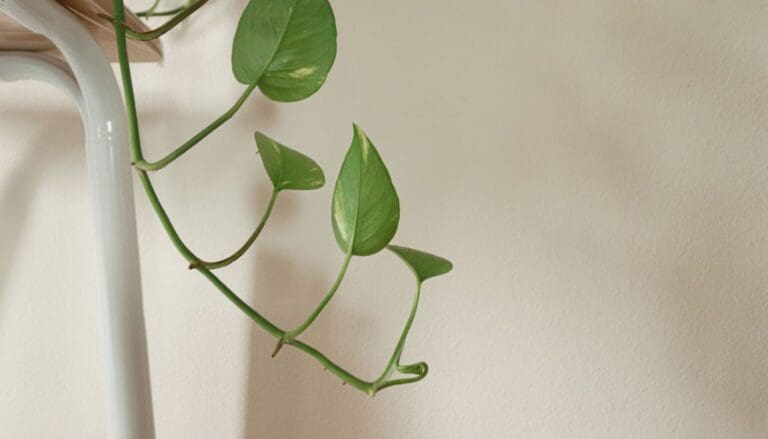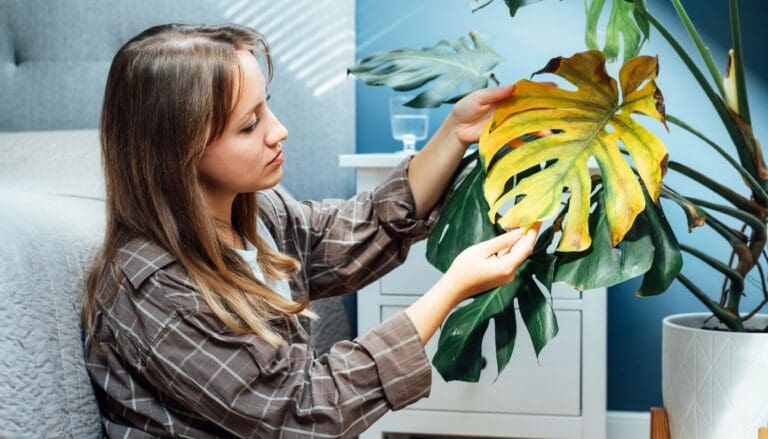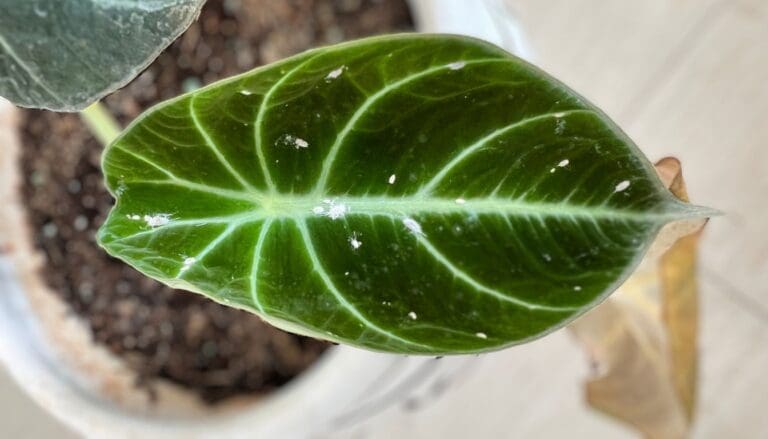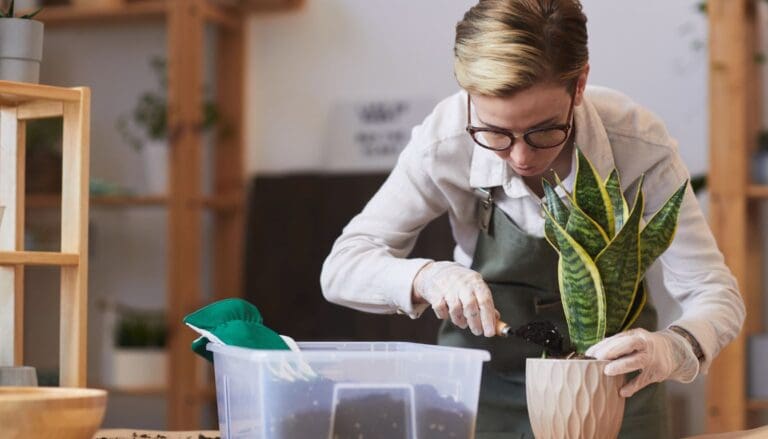Can I Put My Schefflera Outside? (+How To)
Schefflera, a flowering plant genus, includes numerous types, from small shrubs to woody trees. Popularly known as the umbrella tree, these plant species are perfect for indoor atmospheres due to their umbrella-like leaflet arrangements. But surprisingly, growing Schefflera outdoors is not so challenging.
In general, Schefflera can be grown outdoor in the USDA hardiness zones 10-12. However, you must bring your Schefflera indoors in low temperatures if it’s grown in pots. Place it in a light shade, add compost, use well-drained soil, and allow the soil to dry completely between waterings.
If you want to grow your umbrella tree outside, I will assist you with it. Let’s go further into this article to know how to grow and care for Schefflera in an outdoor environment.

Please note: Simplify Plants is reader-supported. Some links in the post are affiliate links and I get a commission from purchases made through links in the post.
Can I put my potted Schefflera outside?
Being a tropical plant, Schefflera needs to be placed at a location that mimics its native environmental zone, and for that, you must take note of the light, spot, and a few other factors.
Location: You can grow Schefflera as annual foliage plants in zone 10 to zone 12.
However, they can tolerate even a little cold climate like zone 9b, but they need to be sheltered in such spots.
While choosing an outdoor spot for these species, try to select a partially shady spot with moderate humidity and diffused light.
Soil: The soil you use for your potted Schefflera should not be a problem when you move the plant outside.
But remember, when under the open sun, the potting soil loses moisture easily.
It is important to note that the umbrella tree thrives in rich soil with adequate moisture, a constant supply of leaf deposits, compost, and organic components from animal litter droppings.
Try to duplicate such rich soil by providing adequate organic material to it for the optimum growth of the plant.
The soil must also be well-draining, so the plant doesn’t get overwatered.
Humidity: Schefflera needs high humidity to grow properly.
The humidity level should be at least 60-65% if you want to see faster growth in your umbrella tree.
Warmth: Schefflera can tolerate 35-105°F without chilling or heat damage, but they thrive best at 65°F-90°F.
Light: Schefflera prefers bright, indirect light, and hence you should try to select a spot with partial to a full shade with adequate filtered sunlight.
Even a spot under the full sun can work.
These plant species require sunlight to produce bright flowers and lush foliage.
Also read: Can Schefflera Get Too Much Sun? (Sunburn)
Can a Schefflera live outside?

Your Schefflera will live outside happily as long as it gets all the ideal conditions for growth.
Preparing the soil: While placing the plant outdoors, keep your Schefflera near some big tree to provide it with diffused light.
Test the soil as it needs to be slightly acidic.
Even when you are planting it outside, garden soil is insufficient to provide growth. Try to use a tropical soil mix instead.
Cleaning the withered leaves: As the plant grows over time, it will eventually drop its leaves.
Try to remove the withered leaves from the root zone to avoid pest infestation.
Keep the leaves clean by keeping away dust and debris.
Watering is an important factor: You must water your Schefflera deeply and regularly.
However, overwatering can be dangerous as it can cause leaf rot and root rot.
So, the soil must be well-draining.
Keep your plant pest-free: Schefflera tends to dry out easily, making them vulnerable to pests like spider mites. To avoid that, keep your plant moderately moist.
Check your plant regularly to avoid pest infestation like – spider mites, aphids, scales, and mealybugs.
Spray a Neem oil solution as a preventive measure.
Also read: Schefflera Pest Problems: Common Pests & Diseases+How To Fix

Topping the plant for balance: For proper care of outdoor Schefflera, topping is often advised when the plant grows tall.
You can remove the tip of the main stalk and force the plant to grow bushier instead of taller.
This helps the plant to take a denser form and balance properly.
Flowering: Outdoor Schefflera blooms seasonally.
But if you live in a cold climate like Florida, it is better to remove the flowers as it helps the plant naturalize easily.
Remove the flowers before the seeds mature.
Feeding the plant: Feeding is crucial if you are planting Schefflera in a spot that lacks organic substances.
Fresh organic compost can be used as a supplement.
In terms of fertilizer, a balanced liquid indoor plant fertilizer is pretty useful when given once a month during the growing season.
Also read: How Often Should I Fertilize My Schefflera? (+Ideal NPK Ratio)
Choosing the right variety: Not all plant species are suitable for outdoor environments.
Climate, soil, and other factors play a crucial role.
Choose your plant species accordingly.
Picking some variegated type can be a wise choice as it gives your garden a unique look with comparatively low maintenance.
Here is some recommendation you can follow:
- Dwarf plant (Botanical Name – Schefflera arboricola): With its bright green foliage, this variety of Schefflera can grow up to 4-5 feet. Their best part is they are extremely easygoing species.
- Alpine (Botanical Name – Schefflera alpina): This species can withstand a cold climate and grow up to 10 feet when planted outdoors.
- Petite (Botanical Name: Schefflera petite): Their bushy appearance is their main attraction. Their lime-green leaves with contrasting hues are a treat to the eyes.
- Schefflera ‘Madame De Smet’: This is a variegated species with gorgeous dark green leaves and golden white patches in contrast. This species takes a very compact form when they grow.
- Australian umbrella tree (Botanical Name: Schefflera actinophylla): This variety can grow into a huge tree with large glossy leaflets. It is also classified as Brassaia actinophylla.
- Green gold (Botanical Name: Schefflera ‘Gold Capella’): This is another variegated variety with a combination of green and golden yellow leaves. It is a fast-growing species.

Pruning: Schefflera species respond well to pruning for optimum growth, height, and fullness.
For your plant to become bushy, pinch off the growing tips.
As the plant grows, leaves at the lower parts fall off, leaving a bare stem.
To encourage regrowth, simply cut off the top of the plant at the desired height.
Remember to use gloves while pruning Schefflera as the few species of Schefflera can be allergic.
Repotting: If you grow your Schefflera in pots, they can be rootbound as Schefflera are fast-growing species.
Repot your plant every few years during springtime.
Things to avoid while growing Schefflera outdoor

While growing Schefflera outdoors, you need to avoid a few things to promote the species’ growth.
- Never overdo with watering. Keep the soil moist but don’t overwater.
- Don’t apply fertilizer in a raw form. Always apply a diluted solution during the summer months.
- Humidity is not a major factor in Schefflera’s growth, but they become susceptible to pest infestation if kept in dry air for long.
- Schefflera need bright light but don’t keep the plants under direct sunlight during midday as it drains out moisture too quickly, making the plant droopy.
- Don’t allow your plant to bloom in the cold climate; the plant will eventually die.
- Don’t use soil that contains excess rocky particles.
- Keep your pets and children away as some species can be allergic.
Propagating Schefflera

You can take a cutting from your potted Schefflera and plant it outside if the conditions are suitable.
Stem cutting in soil or water is the most preferred way for propagating Schefflera.
However, some prefer to propagate Schefflera via leaf cuttings, air layering, or seeds.
Stem cutting: This process starts with the selection of proper cutting points.
- Select and cut the stem near the base of the plant with shear and then dip the cut end in a rooting hormone to promote stationary root growth.
- Place it in potting soil and keep it under indirect light.
- Water it initially.
- Enclose the pot with a thin transparent plastic with 2-3 holes for maintaining humidity.
Leaf-cutting: Propagation through leaf can also be done.
- Select a well-grown leaf. Cut the leaf horizontally into two halves, and dip it in rooting hormone.
- Cutting the leaves into halves will reduce the moisture it loses during the rooting process.
- Fill a pot with fresh potting soil, and put half of the leaf.
- The cut must be at the soil side. Put some water and keep it under low light. The temperature should not be less than 50 degrees.
FAQ
While growing Schefflera in the outdoor spot, you may encounter other issues.
To make things easier, I will answer some frequently asked questions.
Can Schefflera tolerate full sun?
Schefflera can tolerate direct sunlight on its foliage when kept indoors, but they grow at an optimum rate under medium to low sunlight in the outdoor spot.
Even diffused direct sunlight can work.
How cold can a Schefflera plant get?
Schefflera grows in moderate to warm climates.
They are not cold-loving plants; hence never keep Schefflera under 45°F.
How to prune an outdoor Schefflera?
As pruning promotes growth, it is important for indoor and outdoor plants.
For outdoor Schefflera, use a pruning shear and trim the stem above a growth node where new leaves have sprouted.
How big can Schefflera grow?
Their growth varies depending on the species.
However, most of them can grow up to 6 feet on average in the outdoors.
Does Schefflera attract pests?
Outdoor Schefflera is more vulnerable to pests.
Even indoor varieties can also get affected.
Precautionary measures include:
- Keeping the soil bed clean.
- Keeping the leaves dust-free.
- Removing the withered leaves.
- Never leave the plant too dry or the soil too moist.
Final thoughts

Schefflera are common household plants loved by many for easy care and low maintenance requirements. No matter which variety you pick, it can fill your indoor and outdoor space with sufficient beauty.
Though indoor and outdoor gardening differs for Schefflera, the maintenance is not that tough. Filtered light, watering after the soil dries out completely, proper nutrients, and timely pruning are some things you should provide to your outdoor Schefflera.
If you are putting your potted Schefflera outdoors, bring it inside when the temperatures fall. You can grow your Schefflera outside and keep it healthy with the right care techniques.
Reference: Wikipedia, Sciencedirect, Britannica, American Society for Horticultural Science, Schefflera taxonomic history.
Recommended Garden Supplies
| Product Image | Our Recommended Gardening Supplies | Check Offers! |
|---|---|---|
Top Top
Top
Top
Top
Top
Top
Top
Top | rePotme Houseplant and Tropical Classic Potting Soil Mix | Check Offer On Amazon |
 Top
Top
Top
Top
Top
Top
Top
Top | Espoma Organic Indoor Plant Food | Check Offer On Amazon |
 Top
Top
Top
Top
Top
Top
Top
Top | GooingTop LED Grow Light 6000K Full Spectrum Clip Plant Growing Lamp | Check Offer On Amazon |
 Top
Top
Top
Top
Top
Top
Top
Top | Soil Moisture Meter | Check Offer On Amazon |
 Top
Top
Top
Top
Top
Top
Top
Top | Govee Hygrometer Thermometer, Bluetooth Enabled! | Check Offer On Amazon |
 Top
Top | LEVOIT Humidifiers for Large Room(Best For Plants) | Check Offer On Amazon |
 Top
Top
Top
Top
Top
Top
Top
Top | Upgraded DIY Automatic Drip Irrigation Kit, 15 Potted Houseplants Support | Check Offer On Amazon |
 Top
Top
Top
Top
Top
Top
Top
Top | Stainless Steel Heavy Duty Gardening Tool Set | Check Offer On Amazon |
 Top
Top
Top
Top
Top
Top
Top
Top | Bonide Insecticidal Soap | Check Offer On Amazon |
 Top
Top
Top
Top
Top
Top
Top
Top | Bonide 32 oz Spray Neem Oil for Organic Gardening | Check Offer On Amazon |
 Top
Top
Top
Top
Top
Top
Top
Top | Garden Safe Fungicide | Check Offer On Amazon |





